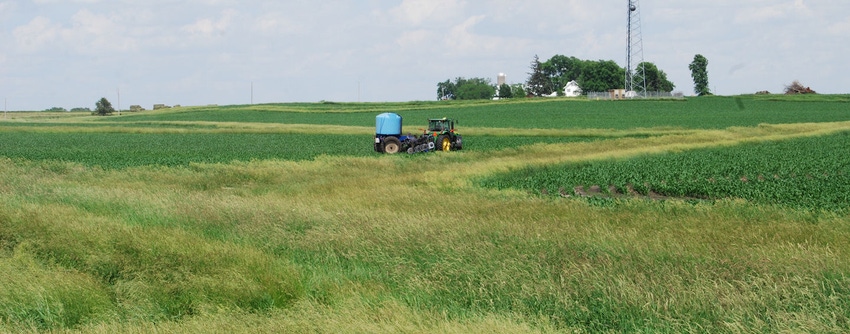March 27, 2016

Carolyn Thompson, a Sioux Fall, S.D., attorney who writes a column called “Estate Planning,” for the print edition of the Dakota Farmer, says she has learned that the value of farmland is more "than the dollar." It's not just the market value. The value of land is what it will do for your operation in the future. Sometimes, the value is in the legacy it creates. . “Such values are typically not protected if an estate plan has a simple distribution of the land, such as ‘equal to all children,’ which we refer to as a ‘divide and destroy’ plan,” she says. The following are some of her ideas protecting the true value of land.
By Carolyn Thompson
I found myself thinking the other day about the years I spent in junior high and high school as a waitress at the Parkston, S.D., Corner Café, which my parents owned.
I joke that I served coffee to every farmer in Hutchinson County during that period of time. And while I poured, I listened. I worked there during the 1980s, which was not a great time in history to be a farmer. That 25 cent cup of coffee served as the equivalent of a good therapy session. It offered farmers the opportunity to get to town, away from their operations, and with other farmers facing the same thing: how to pay the mortgage. Sometimes the conversations involved rough language about prices and bankers, and sometimes it was a painful silence or a heart breaking, gut wrenching look in their eyes. They all knew it was tough times. The fear of foreclosure caused a deep reckoning on what inventory or equipment could be sold to keep the bank at bay. There was a disgust for having to sell commodities for less than the input costs, but if cash could be raised, they were willing to do what needed to be done to save the land.
And now, I reflect on my opportunity to continue to work with farmers in a four-state region and we are still talking about the value of the land. And here’s what I’ve learned: the dirt is worth more than the dollar. It really doesn’t matter if the land is $5,000 an acre or $15,000 an acre. The value of the land isn’t based on the purchase price; it is found in the potential of what that ground can do for the operations, and in some cases, the legacy.
When we visit with farmers about their real property, you can tell they aren’t just thinking about the purchase price or legal description, they view their property in terms of the wet years, the good years, how that quarter section slopes on the northwest corner. The land is so much more than a value on their balance sheet.
Everyone makes value judgments. Some find security in gold. Others find security by having money in the bank. For many farmers I know, they find security and value in their ability to get out of their truck, look out at the horizon, know that this piece of land is the only piece God created quite like it, and marvel in the fact that they get to be the treasurer of that piece of land for now.
While many farmers value their land almost as much as their first born, it is up to them to protect that land through a well thought out estate plan. In order to protect the land during life, a farmer makes trade-offs. A farmer has traded blood, sweat, tears and perhaps promises to the bank when the crops didn’t come in. But what will their kids trade off? Will they make the same decisions when it comes to the land? Do they know what their parents would have wanted? Do they know the value the land can bring long term?
The reality is that a farmer’s children (or their in-laws) may not value the land in the same way. They may see the value in the dollars, not the dirt. It is up to the farmer to put an estate plan in place that demonstrates the value the land to them during their life and the value they hope it to have for their heirs. That value is typically not protected if the estate plan has a simple distribution of the land as “equal to all children” – which we refer to as a “divide and destroy” plan. That value may not be protected through an unworkable purchase option for a farming child. Farmers work too hard not to spend the time and resources necessary to determine their best estate planning options.
Good estate planning is not a hand ruling from the grave. Quality estate planning is a hand guiding the next generation by not only sharing the valuables, but by sharing valuable ownership and management principles as well. The time and resources required to put an effective plan in place will be minimal compared to that which has already been sacrificed; put a plan in place that honors you, your heirs and the legacy you want to leave.
For more information, contact Thompson at Thompson Law, at 605-362-9100 or see cathompsonlaw.com.
You May Also Like




